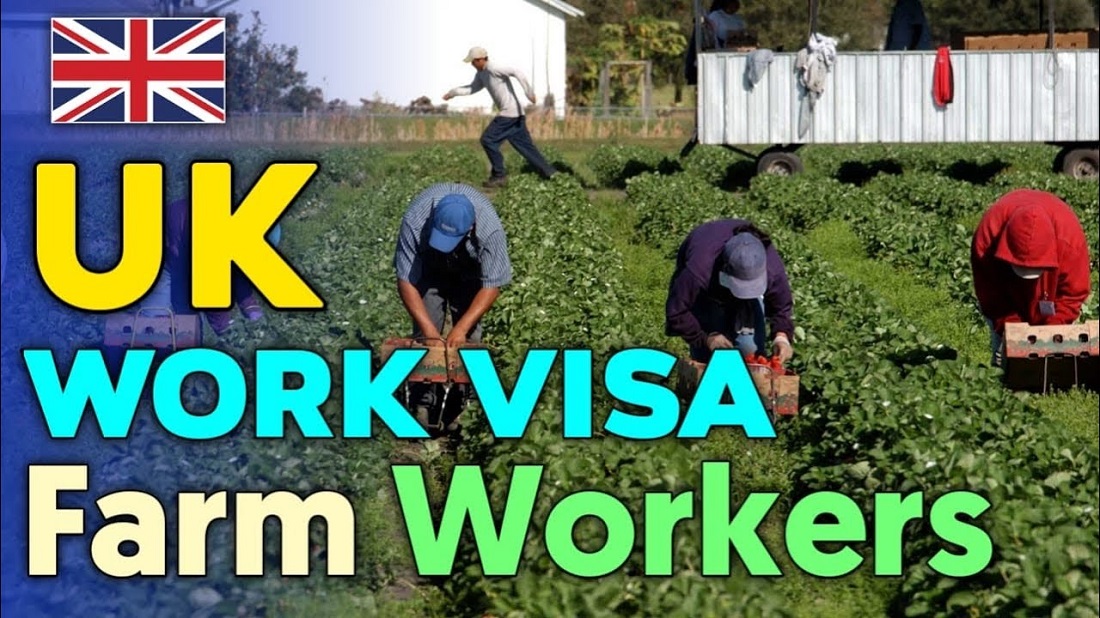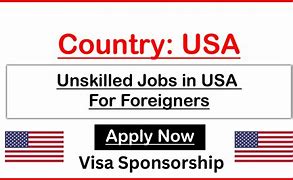The United States remains one of the most desired immigration destinations in 2025. With high salaries, world-class universities, and a strong job market, America continues to attract skilled workers, students, and families from all over the world.
But immigration to the US isn’t always straightforward. You’ve probably heard of the H-1B visa lottery or the Green Card, but the reality is there are multiple visa and work permit routes — some faster and more reliable than others.
For skilled professionals, salaries in the US range from USD $60,000 at entry level to $120,000 or more in high-demand industries like IT, healthcare, and engineering. With the right visa pathway, immigrants can move, work, and eventually transition to permanent residency.
This guide breaks down the main jobs in demand, salary expectations, visa types (H-1B, EB-3, EB-2, etc.), benefits and challenges, and a step-by-step guide to applying in 2025.
How Much Do Skilled Workers Earn in the US?
The US is one of the highest-paying countries for skilled immigrants.
Average Salaries by Sector (2025)
| Occupation | Average Annual Salary (USD) | Notes |
|---|---|---|
| Software Engineer | $95,000 – $120,000 | Higher in California, New York |
| Data Scientist | $100,000 – $130,000 | AI/ML roles at top companies |
| Cybersecurity Analyst | $90,000 – $115,000 | Huge shortage across industries |
| Registered Nurse | $70,000 – $100,000 | Demand in all 50 states |
| Doctor (Physician) | $180,000 – $250,000 | Specialists can earn $300,000+ |
| Skilled Trades (Plumbers, Electricians) | $50,000 – $75,000 | Often overlooked immigration path |
| Truck Driver | $48,000 – $70,000 | Growing shortage in logistics |
| Accountant/Financial Analyst | $65,000 – $95,000 | Especially in New York, Chicago |
IT and healthcare dominate high-paying jobs, but trade workers and truck drivers are also in shortage, making them viable immigration paths.
Regional Salary Comparison
| State | Average Salary | Cost of Living (1-bed apt/month) |
|---|---|---|
| California (Silicon Valley, LA) | $85,000 – $130,000 | $2,000 – $3,200 |
| New York | $80,000 – $125,000 | $2,100 – $3,000 |
| Texas | $70,000 – $110,000 | $1,200 – $1,800 |
| Florida | $65,000 – $105,000 | $1,200 – $1,700 |
| Midwest (Ohio, Indiana) | $60,000 – $95,000 | $900 – $1,300 |
California and New York pay the most but have the highest cost of living. Texas and Florida offer lower living costs with good salaries.
Jobs in Demand for Immigrants in 2025
The US Department of Labor identifies shortage sectors, and employers are increasingly hiring foreign workers.
-
IT & Tech: Software engineers, data scientists, cloud specialists, cybersecurity.
-
Healthcare: Nurses, doctors, medical technologists, caregivers.
-
Skilled Trades: Welders, electricians, plumbers, mechanics.
-
Transportation: Truck drivers, logistics specialists.
-
Engineering: Civil, mechanical, electrical engineers.
-
Education: STEM teachers in public schools.
-
Finance: Accountants, auditors, analysts.
Main Visa & Immigration Pathways
1. H-1B Visa (Skilled Workers)
-
Most well-known visa for IT & tech workers.
-
Requires:
-
US employer sponsorship.
-
Bachelor’s degree (or equivalent).
-
-
Valid for 3 years, extendable to 6.
-
Leads to Green Card sponsorship (EB-2 or EB-3).
-
Annual cap: 85,000 visas, lottery-based.
2. H-2B Visa (Temporary Non-Agricultural Workers)
-
For seasonal or temporary work (hospitality, landscaping, construction).
-
Employers must show labor shortage.
-
Valid up to 1 year (renewable to 3).
3. EB-3 Green Card (Skilled, Professional & Unskilled Workers)
-
One of the best long-term routes for immigrants.
-
Categories:
-
Skilled workers (2+ years experience).
-
Professionals (degree holders).
-
Unskilled workers (entry-level).
-
-
Requires employer sponsorship, but leads directly to permanent residency.
4. EB-2 Green Card (Advanced Degrees & Exceptional Ability)
-
For professionals with Master’s degree or higher OR those with exceptional ability in sciences, business, or arts.
-
Can apply through National Interest Waiver (NIW) without employer sponsorship if your work benefits the US.
5. O-1 Visa (Individuals with Extraordinary Ability)
-
For highly talented individuals (arts, science, sports, business).
-
Often used by researchers, innovators, and even athletes.
6. F-1 Visa (Students → Work Pathway)
-
Study in the US → Optional Practical Training (OPT) work permit → transition to H-1B or Green Card.
-
Popular with international students in tech, business, and healthcare.
Step-by-Step Guide to US Immigration (Work Route)
Step 1: Identify Your Visa Category
-
H-1B if you’re in IT/tech with a degree.
-
EB-3 if you’re skilled/semi-skilled with employer sponsorship.
-
EB-2 NIW if you have advanced qualifications.
-
H-2B if you want seasonal/temporary work.
Step 2: Secure a Job Offer
-
Search on Indeed, Glassdoor, LinkedIn, US Job Bank.
-
Look for employers willing to sponsor visas (keywords: “H-1B sponsorship,” “EB-3 sponsorship”).
Step 3: Employer Files Petition
-
For H-1B: Employer files Form I-129 with USCIS.
-
For EB-3/EB-2: Employer files PERM Labor Certification → then I-140 Immigrant Petition.
Step 4: Apply for Visa
-
Once petition is approved, apply at your local US embassy.
-
Submit documents: passport, degree, work experience, proof of funds, medical exam.
Step 5: Enter the US & Start Work
-
H-1B and H-2B holders get a temporary status.
-
EB-3/EB-2 lead directly to Green Card.
Step 6: Apply for Green Card (if not already in process)
-
Employer sponsorship required for most.
-
If EB-2 NIW, apply independently.
Step 7: Path to Citizenship
-
After 5 years of Green Card residency, you can apply for US citizenship.
Benefits of Immigrating to the US
-
High salaries ($60,000–$120,000+) in IT, healthcare, finance.
-
Global hub for innovation — Silicon Valley, Wall Street, biotech hubs.
-
Permanent residency options (EB-3, EB-2, family sponsorship).
-
Citizenship within 5 years of Green Card.
-
Diverse opportunities — from rural farming jobs to Fortune 500 careers.
-
Family visas — spouse and children can join.
Challenges for Immigrants
-
H-1B lottery system — highly competitive, not guaranteed.
-
Employer dependence — visas tied to employer sponsorship.
-
High cost of living — especially in NYC, LA, San Francisco.
-
Healthcare costs — expensive without insurance.
-
Backlogs — EB-3 and EB-2 processing can take years in some cases.
Quick Comparison: US Visa Types in 2025
| Visa | Who It’s For | Salary Potential | PR Pathway | Processing Time |
|---|---|---|---|---|
| H-1B | Skilled workers (IT, engineering, healthcare) | $70k–$120k | Yes (Green Card) | 6–12 months |
| H-2B | Seasonal/temporary workers | $30k–$45k | No | 3–6 months |
| EB-3 | Skilled/unskilled workers | $40k–$90k | Yes (direct PR) | 1–3 years |
| EB-2 (NIW) | Advanced degrees/exceptional ability | $80k–$120k | Yes (direct PR) | 1–2 years |
| O-1 | Extraordinary talent | Varies | Sometimes | 3–6 months |
| F-1 (Students) | International students | $30k–$60k (post-study OPT) | Yes (if transition to H-1B/EB-3) | Study + OPT |
Conclusion
In 2025, the United States remains one of the most rewarding — but also competitive — immigration destinations. With salaries ranging from $60,000 to over $120,000, a wide range of jobs in demand, and pathways to permanent residency, skilled workers, students, and even tradespeople can find opportunities.
The key is choosing the right visa:
-
H-1B for IT & skilled professionals.
-
EB-3 for those with or without degrees, if an employer is ready to sponsor.
-
EB-2 NIW for advanced professionals seeking independence.
-
H-2B for short-term work.
If your goal is the American Dream — high income, career growth, and eventual citizenship — the US immigration system in 2025 offers multiple doors. The challenge is picking the one that best fits your skills, then preparing carefully to succeed.


